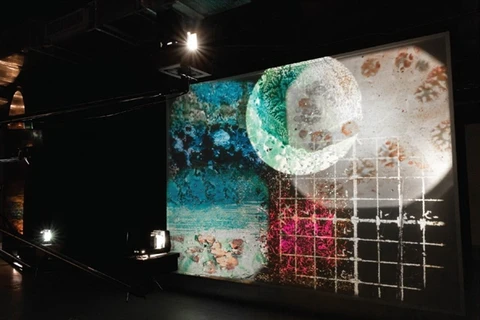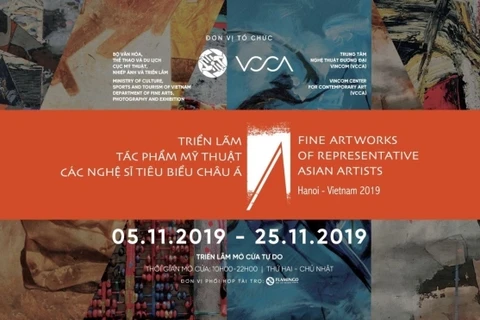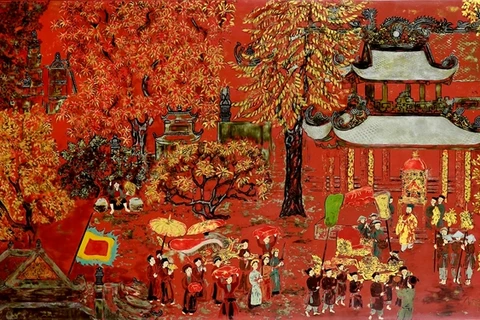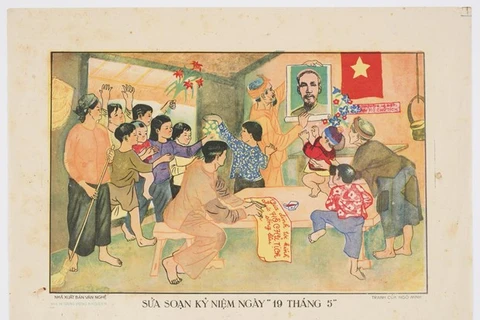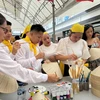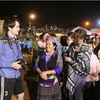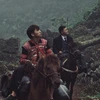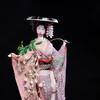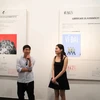Hanoi (VNA) - Looking for those who perfect and build the "Vietnamese patterns" is not only an aspiration of the author's family but also a need of the science community.
As the first art study generation of the Ministry of Culture’s Institute of Fine Arts, Associate Professor Nguyen Du Chi (1938-2000) has left behind many valuable studies and collections on Vietnamese patterns, including the book "Vietnamese Patterns - from prehistoric times to the first half of feudal period" that won the State prize awarded by President Truong Tan Sang in 2012.
Nearly 40 years of hard work in finding, printing and storing ancient patterns, the researcher remained passionate about his job until the last days of his life. Assoc. Prof. Tran Lam Bien said during the summer of 2020 when Chi was in the second stage of his serious illness, he and his fellows still travelled to Ha Tinh and then returned to Hanoi, rushed into work as usual. A few months later, he passed away to the grief of his family and friends.
As the year 2020 marks his 20th death anniversary and 17 years of his unfinished works, the issue of extending traditional Vietnamese patterns arose again not only among researchers but also ancient architecture restorers, builders and designers.
Valuable heritage in the works
Following his sudden death in 2000, the book “Vietnamese Patterns - from prehistoric times to the first half of feudalism" was compiled by MA. Nguyen Hai Phong, cultural researchers Phan Cam Thuong and Nguyen Duc Binh, becoming an invaluable document on Vietnamese patterns before the 16th century.
 “Vietnamese Patterns - From prehistoric times to the first half of the feudal period” along with five volumes of unpublished versions (Photo courtesy of his family)
“Vietnamese Patterns - From prehistoric times to the first half of the feudal period” along with five volumes of unpublished versions (Photo courtesy of his family) Commenting on the book, MA. Nguyen Hai Phong, former head of the Institute of Fine Arts’ Department of Ancient Arts, said in general, patterns during this period are less expressive due to primitive social division while social relations were uncomplicated.
He added that Chi’s explanations in the book are simple, easy to understand and mostly statistical.
The development and complexity of patterns throughout periods marks progress in human mind and life, which is one of the many values that the book has left to researchers, Phong said.
His works have left influences on young researchers, who are few but passionate.
During his eight years of research and reconstruction of Dam pagoda in Bac Ninh, young researcher Dao Xuan Ngoc regularly used the book for reference before announcing the final result.
Dr. Tran Trong Duong from the Han Nom Research Institute, head of the research and restoration group for Dien Huu pagoda (now known as One Pillar pagoda), said research at that time met difficulties because most of studies were deductions from other disciplines such as archaeology and history.
Support needed
Art research and theory, especially traditional arts, is difficult and attracts few learners because they require wide knowledge in the fields of history, literature and many other social sciences, said industry experts.
Therefore, the lack of books and human resources for ancient art research is quite serious, while the need for in-depth study is increasingly growing. It is the first urgent reason when talking about the necessity of completing and extending the "Vietnamese pattern" legacy of Researcher Nguyen Du Chi, said Phong.
Secondly, it is urgent to add explanations for patterns in the work. Due to differences in position, function, shape and layout, each pattern could have different connotations, he said.
Finally, the book is extremely useful for the construction and restoration of Vietnamese architectures, he added.
About the continued writing of the book "Vietnamese Patterns - from prehistoric times to the first half of feudal period", Phong said those who are knowledgeable, able to express fluently and understandably like researcher Phan Cam Thuong could handle it. However, it is a long and difficult task.
| Associate Professor Nguyen Du Chi was born in 1938 in Ha Tinh to a family with traditional fondness for learning. Together with teacher Nguyen Do Cung, researchers Nguyen Tien Canh, Chu Quang Tru, Tran Lam Bien, Chi belonged to the first generation of Vietnamese art research in the 20th century. He wrote 27 books on traditional arts, fine arts and archaeology, authored more than 100 scientific studies for domestic magazines, and was awarded with more or less 10 prizes at home. Notably in 2012, two of his works were honoured with the State Awards for Literature and Arts, namely "On the way to find the beauty of ancestors" (2001) and "Vietnamese patterns - From prehistoric times to the first half of the feudal period” (2003)./. |


